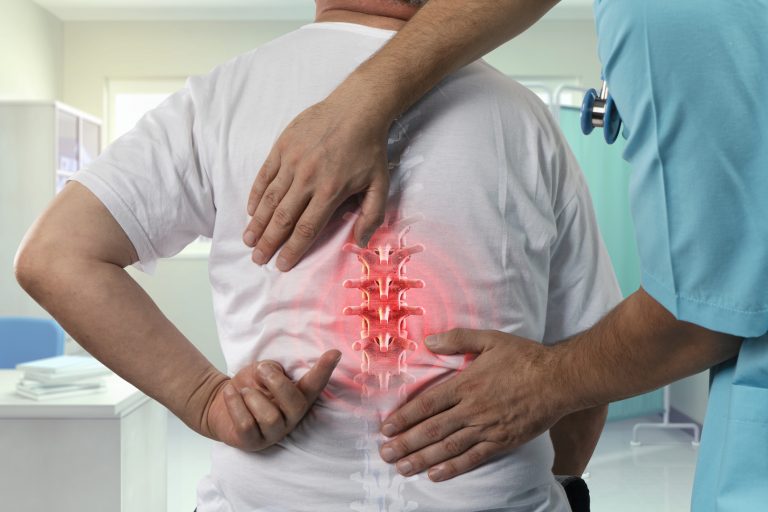The Anatomy of the Thoracic Spine
Degenerative thoracic spine is a term used to describe a degenerative spine condition that has developed in the middle of the back (thoracic spine). Although the thoracic spine is less likely to deteriorate compared to the lumbar or cervical (neck) regions, this section of the spine is not immune to degeneration and damage.
The thoracic spine is unique for several reasons. First, the 12 vertebrae of the thoracic spine (T1 to T12) connect directly to the ribs, meaning that they help the rib cage protect major organs like the heart, lungs, and liver. Since they are anchored to the rib cage, the thoracic vertebrae do not have the same range of motion as vertebrae in the neck or lower back and therefore are not at the same risk of developing a degenerative spine condition.
Degenerative Spine Symptoms
In some cases, a spine condition develops in the thoracic spine and can cause the following symptoms:
- Pain
- Muscle weakness, numbness, or tingling
- Limited mobility
- Pain during certain movements
These symptoms can occur in the spine or as far away as the arms or legs. This is because a pinched nerve can cause pain and symptoms that travel the length of the nerve pathway.
Degenerative Spine Conditions that Affect the Thoracic Spine
Two common degenerative thoracic spine conditions include osteoarthritis and degenerative disc disease. Osteoarthritis, also called degenerative arthritis of the spine, is the deterioration of cartilage around the facet joints — the joints that allow the vertebrae to hinge and move. Degenerative disc disease, on the other hand, is the gradual breakdown of the discs between each set of vertebrae. Both of these conditions can lead to the development of the following degenerative conditions in the thoracic spine:
- Herniated disc
- Bulging disc
- Bone spurs
- Facet joint inflammation (facet disease or degenerative joint disease)
- Spinal stenosis
Treatment Options
Your doctor can recommend a series of conservative treatments for pain relief depending on the type, severity, and location of the degenerative disease in your thoracic spine. These treatments can include:
- Physical therapy
- Pain medication
- Chiropractic care
- Hot/cold compresses
If the pain persists after conservative treatment, the patient may consider a minimally invasive surgical option. Minimally invasive procedures offer many benefits including smaller incisions, less scarring, and faster recovery times. Contact BEST Health System to learn more about our services.
